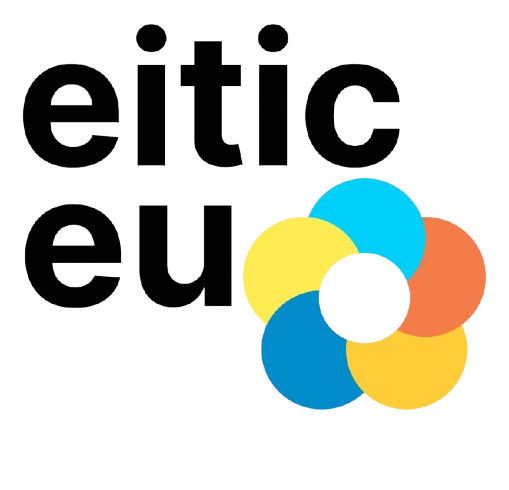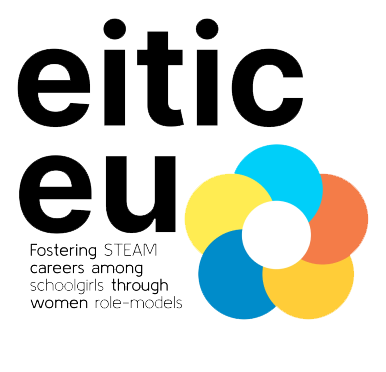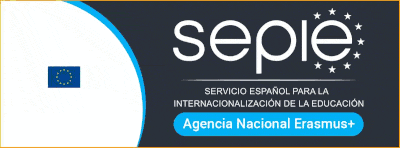
Beyond the poster
08/26/2025 b vasileiadis
The unseen faces of STEM
Campaigns across Europe and beyond aiming to encourage girls to chase STEAM careers are often showcased with extraordinary female figures. For instance, Nobel laureates, space explorers, and high-ranking tech executives. These icons are well-respected people and rightly celebrated because they embody excellence, determination, and trailblazing ambition in male-dominated sectors.
However, a paradox quietly surfaces, when these role models are the sole focus of representation. The very awe, they inspire, could simultaneously reinforce the perception that achievements are rare and reserved for only a few, talented, and exceptional people. This may, unintentionally send a message like “I maybe don’t belong here.”
This article comes to explore how the overemphasis on iconic success stories, without giving more light on mid-range, accessible role models, could deepen the sense of exclusion among girls and young women.
THE TRAP OF ‘EXCEPTIONAL WOMAN’ NARRATIVE
Promoting gender equity in STEAM is often highlighted by exceptional women because they are symbols of possibility. Nevertheless, research suggests that this focus, while well-meaning, could have unintended impact.
To be more specific, studies show that when role models are ‘too far removed’ from student’s reality, they may inspire admiration, but not identification. According to Dasgupta (2011), high-achieving women in science could paradoxically reinforce the idea that success in these fields requires extraordinary ability, rather than effort, interest, or dedication, especially among younger ones who do not see themselves as ‘naturally gifted’ in STEM.
This is part of what researchers call this effect as the “exceptional woman” trap. It is the idea that making rare success hyper-visible may backfire if it is not followed by ordinary or ‘normal’, relatable examples. Cheryan et al. (2017) and Dasgupta & Stout, 2014, also, found that stereotypical portrayals of success in STEM (often male, highly technical, and elite) alienate students who do not fit in a specific context of a field and that visibility without belonging is not enough. As a result of this, is a message (quiet though but powerful) that says “It’s not for everyone.”
«…the sense that the mentor’s journey was realistic and reproducible…»
WHERE ARE THE MID-RANGE ROLE MODELS?
While iconic figures can set the outer limits of what is possible, they cannot, although, on their own, create a sense of belonging or that show girls that need to see women, who are closer to their own stage of life, education, and career trajectory. These are the “mid-range” role models: women who are established in their fields but not unreachable, whose paths feel possible to follow.
Recent evidence confirms this. Dennehy and Dasgupta (2017) found that first-year female engineering students, who were mentored by slightly more senior female peers, reported higher confidence, belonging, and persistence in their studies compared to those without such mentors. The key factor was attainability: the sense that the mentor’s journey was realistic and reproducible.
The EIGE GEAR Tool (updated 2022), in the European context, similarly stresses that effective gender equality plans in research and academia should include systemic, ongoing exposure to relatable female professionals and not only high-profile speakers. UNESCO’s STEM Education for Girls and Women: Breaking Barriers and Unlocking Potential (2017) concludes that sustained exposure to local and accessible role models can be more impactful for long-term engagement than one-off encounters with elite figures.
«…in 2021, women accounted for just 32,8% of STEM graduates across EU countries…»
Yet in many outreach programs, mid-range visibility remains the missing link. A single annual event with a celebrated guest may leave an impression, but it rarely creates the sustained contact needed to normalize women’s presence in STEAM and reshape perceptions of who belongs.
DATA SNAPSHOT: GIRLS’ PERCEPTION OF BELONGING IN STEM
Evidence from across Europe confirms the following: women are less present in STEM, especially in advanced and decision-making roles. And that is a contribution to the feeling that “I’m not one of them.”
Some examples are as follows:
- The university pipeline: STEM graduates
- In 2022, women constituted only about 30,9% of all tertiary-level STEM students, despite representing 53,7% of total tertiary students. This gap is even wider in vocational education (VET), where only 16% of enrolled STEM students were female.
- To be more specific, in 2021, women accounted for just 32,8% of STEM graduates across EU countries. Some of them, for instance, Romania, Poland, and Greece where well above the EU average (above 40%) in comparison to other countries like Germany, Spain, and Belgium (under 28%).
- Doctoral level and ICTST
- EM fields still struggle with severe gender imbalance at advanced levels. For instance, only 22% of doctoral-level graduates in ICT across the EU were women.
- A broader lens shows that women still hold just 34% of all research positions in the EU.
- Workforce representation
- In 2023, around 52% of all people employed in science and technology in the EU were women (in some jobs a majority) but when focusing on science and engineering roles specifically, women accounted for only 41%.
- Regional disparities were striking. For example, in 2023, Denmark, Spain, and Bulgaria each reached around 50% female scientists and engineers, while Hungary, Finland, Italy Slovakia, and Malta hovered around 31-34%.
HOW EITIC-EU AND INITIATIVES LIKE IT CAN BRIDGE THE GAP
Bridging the distance between inspiration and belonging requires more than showcasing success stories. It demands and intentional, sustained effort to integrate role models into the everyday educational environment. This where EITIC-EU’s approach offers a practical model.
The project works at two levels. At the inspirational level, it highlights women who have reached significant milestones in STEAM, ensuring that girls see the possibilities at the highest tiers of achievement. But crucially, it complements this with a relatable level. Through its methodological guide and educational resources, EITIC‑EU empowers schools to bring women role models into the classroom — not just as distant stars, but as professionals whose career paths are tangible and rooted in real challenges
In partner schools, this translates into:
- Interactive sessions with female STEAM professionals from the local community.
- Mentoring initiatives pairing students with university students or recent graduates.
- Hands-on activities where girls work alongside female facilitators in coding, robotics and design tasks. this could reinforce competence through collaboration rather than observation alone.
If these components integrate into curriculum materials, schools can deliver consistent, repeat engagement rather than a single event.
CLOSING REFLECTION
Exceptional women in STEAM are necessary because their achievements can shift perceptions and signal that the barriers can be overcome. Yet visibility without relatability leaves a gap. If the only stories told are those of the extraordinary, too many girls will conclude that the pathway is reserved for the rare few.
Inclusion is built when girls can imagine themselves in the picture — not at the pinnacle from the outset, but along the journey. That requires embedding role models at every stage of the educational pipeline: from the peer mentor in secondary school, to the early-career engineer in the local community, to the recognized leader on the global stage. Each plays a role in making belonging visible.
Projects like EITIC-EU show that this is possible. By combining iconic inspiration with everyday representation, they transform aspiration into participation. The challenge now is to ensure that such approaches are not the exception but the norm.
REFERENCES
Cheryan, S., Ziegler, S.A., Montoya, A.K. & Jiang, L. (2017) Why are some STEM fields more gender balanced than others? Psychological Bulletin, 143(1), 1–35. https://doi.org/10.1037/bul0000052
Dasgupta, N. & Stout, J.G. (2014) Girls and women in science, technology, engineering, and mathematics: STEMing the tide and broadening participation in STEM careers. Policy Insights from the Behavioral and Brain Sciences, 1(1), 21–29. https://doi.org/10.1177/2372732214549471
Dasgupta, N. (2011) Ingroup experts and peers as social vaccines who inoculate the self-concept: The stereotype inoculation model. Psychological Inquiry, 22(4), 231–246. https://doi.org/10.1080/1047840X.2011.607313
Dennehy, T.C. & Dasgupta, N. (2017) Female peer mentors early in college increase women’s positive academic experiences and retention in engineering. Proceedings of the National Academy of Sciences, 114(23), 5964–5969. https://doi.org/10.1073/pnas.1613117114
European Commission (2025) A STEM Education Strategic Plan: skills for competitiveness and innovation. COM(2025) 89 final. Brussels: European Commission. Available at: https://education.ec.europa.eu/sites/default/files/2025-03/STEM_Education_Strategic_Plan_COM_2025_89_1_EN_0.pdf.
European Commission (2025) She Figures 2024: Gender in Research and Innovation (interactive report & news). https://projects.research-and-innovation.ec.europa.eu/en/knowledge-publications-tools-and-data/interactive-reports/she-figures-2024
Eurostat (2024, 8 March) Women totalled almost a third of STEM graduates in 2021. https://ec.europa.eu/eurostat/web/products-eurostat-news/w/ddn-20240308-2
Eurostat (2024, 13 June) Women make up 52% of science & technology employment. https://ec.europa.eu/eurostat/web/products-eurostat-news/w/ddn-20240613-2
Eurostat (2025, 11 February) 7.7 million female scientists and engineers in the EU. https://ec.europa.eu/eurostat/web/products-eurostat-news/w/edn-20250211-1
European Institute for Gender Equality (EIGE) (2022) Gender Equality in Academia and Research (GEAR) Tool. https://eige.europa.eu/gender-mainstreaming/toolkits/gear?language_content_entity=en
UNESCO (2017) Cracking the code: Girls’ and women’s education in STEM. https://unesdoc.unesco.org/ark:/48223/pf0000253479
EITIC-EU (n.d.) Fostering STEAM careers among schoolgirls through women role-models. https://eitic.innovadorastic.org/en










 eitic@cibervoluntarios.org
eitic@cibervoluntarios.org